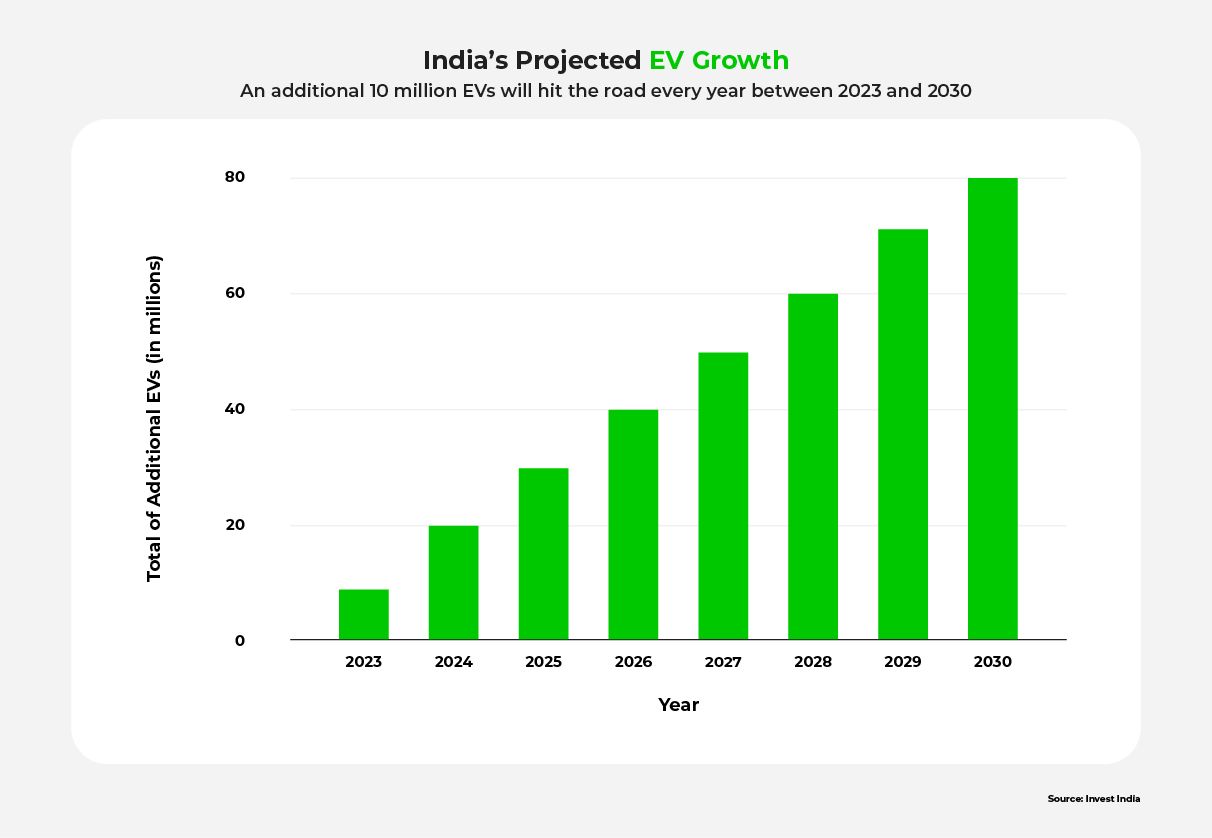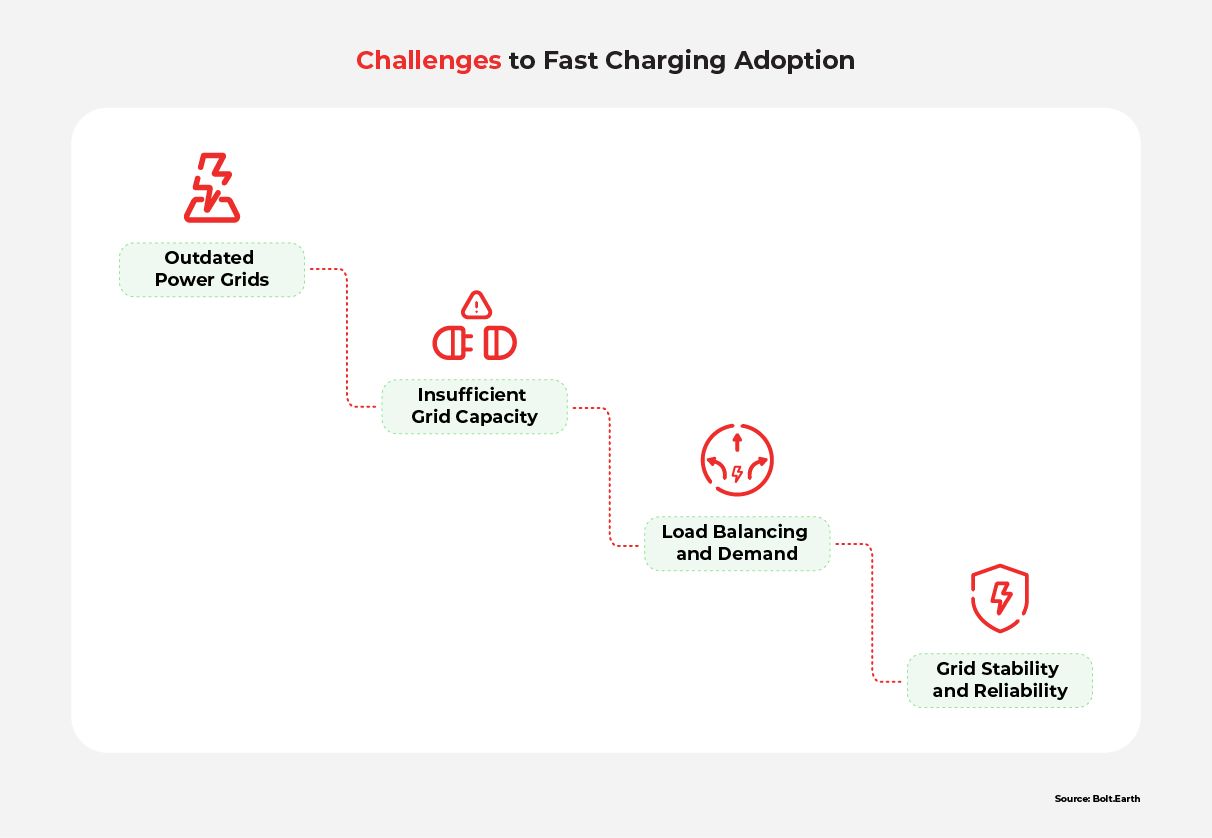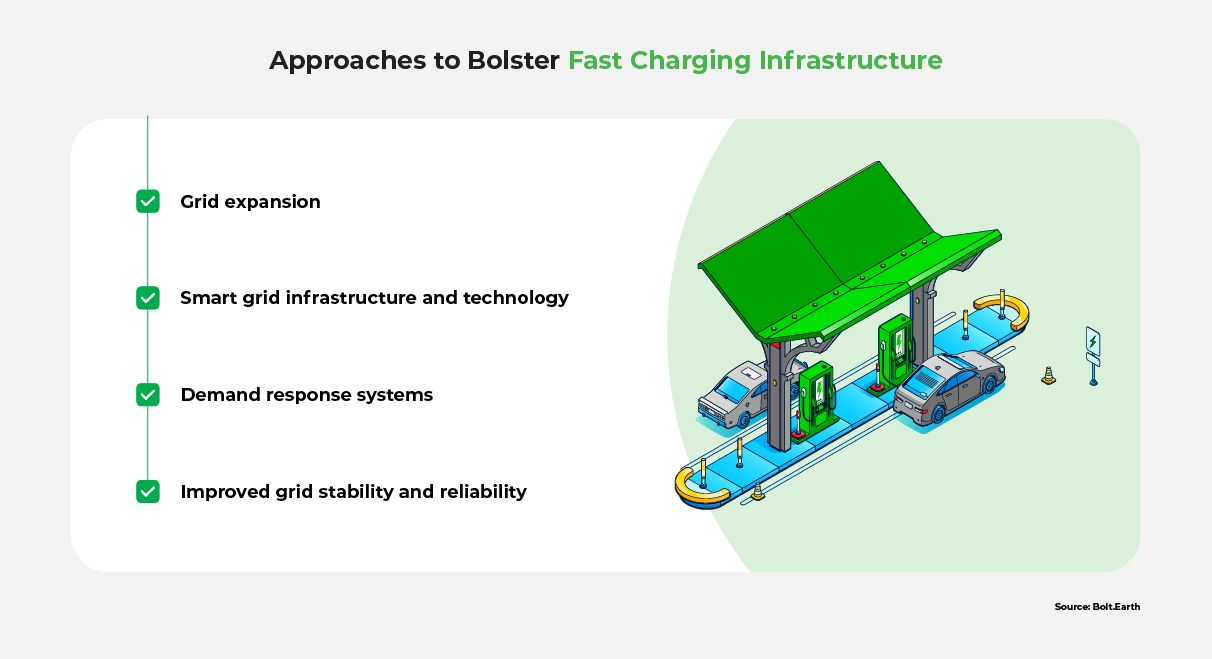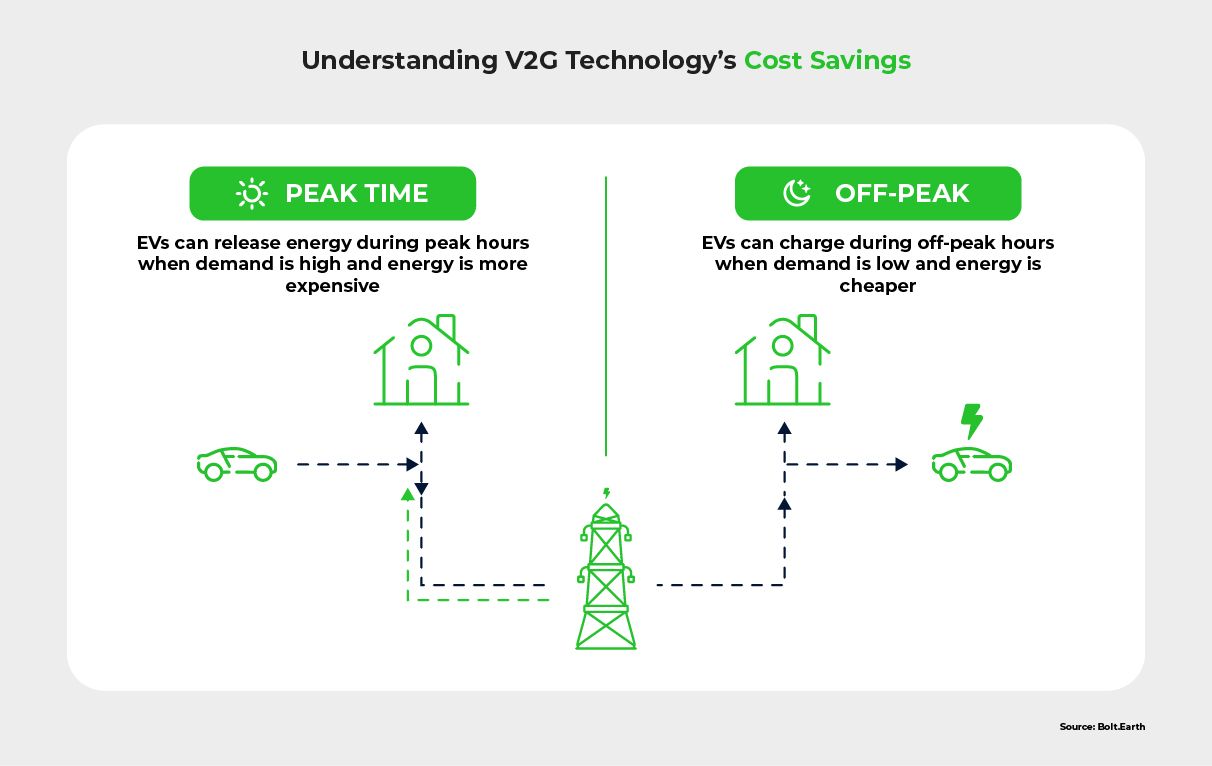How Fast EV Charging Will Transform India’s Energy Landscape
Raghav Bharadwaj
Chief Executive Officer
Published on:
13 Oct, 2023
Updated on:
31 Oct, 2025

Electric vehicle (EV) adoption in India is skyrocketing due to increased environmental awareness, government initiatives, and private sector investments. As more individuals and fleet operators transition to eco-friendly transportation solutions, there arises a critical need for an efficient EV charging infrastructure upgrade that can support dc fast chargers and every electric vehicle charging station in India. A seamless charging experience is vital to earn the trust of potential EV customers. In turn, such an experience can increase adoption and boost growth in the EV industry. However, to deliver this experience, it’s crucial to strengthen the electricity grid and prioritize fast charging.
To better understand the nature of investments and their potential challenges and impact, this article will answer:
- Why should India invest in electrical grids for a better fast charging network?
- What are the current challenges with fast charging, and how can we solve them?
- How can developments in the fast charging industry help the overall EV ecosystem of India?
The State of Electric Vehicle Charging Stations and Power Grid in India
Although laudable strides have been made recently, India’s existing electricity infrastructure continues to raise concerns about its ability to support growing EV demands and the rollout of dc fast chargers across every electric vehicle charging station in India. It’s projected that India will require an annual installation of 4,00,000 chargers, totaling 1.3 million regular chargers by 2030. This will aid the country in achieving an infrastructure-to-EV ratio of 1:40, which falls short of the global average of 1:20.
Notably, another issue is the unequal distribution of charging stations across urban and rural areas, leading to range anxiety concerns for long-distance trips. Additionally, the prevalent infrastructure primarily comprises standard chargers resulting in extended charging periods. This inconvenience poses a challenge for users who depend on EVs for daily commutes or for commercial uses.
Lastly, the power grid’s capacity is inadequate to accommodate the fast-charging needs of a rapidly expanding EV market. The surge in EV usage adds strain to the grid, causing power outages and disrupting the stations’ efficient functioning. It’s projected that if 33% of automobile sales in India are EVs by 2030, the country would require 37 terawatts (TW) of power. As of June 2023, the total installed capacity was 4,21,901 MW, which equates to roughly 0.422 TW.
Addressing these gaps necessitates significant grid investment for EV charging, ensuring India can support large-scale fast-charging expansion.
Why Grid Investment for EV Charging Is India’s Next Leap
The EV adoption trend in India is still in its infancy, and tackling these challenges now can set the course for explosive future growth. Moreover, mounting climate change concerns and their resulting impacts underscore the urgency of shifting to cleaner and sustainable transportation.
EV adoption is expected to skyrocket at a 49% annual rate between now and 2030, with 10 million EVs anticipated to hit Indian roads annually during this period. To ride this wave, India must bolster its electricity infrastructure and accelerate EV charging infrastructure upgrades to ensure grids are scalable, resilient, and capable of powering dc fast chargers nationwide

Scalability and Capacity
India’s growing EV market is increasing the demand for efficient and high-speed charging solutions. Furthermore, Indian cities are expected to double their energy consumption by 2040 due to heightened cooling demands. These trends could exert considerable strain on the power grid and lead to extensive power outages. To prevent this, stakeholders must invest in expanding electricity generation and distribution infrastructure.
Reduced Charging Times
A high-capacity charging infrastructure facilitates quicker and more efficient charging, making EVs appealing and practical for consumers. Faster charging enriches the user experience and paves the way for long-distance travel and commercial applications. However, supporting high-speed and high-capacity charging requires investments in power infrastructure today.
Grid Stability and Reliability
Without a robust grid, charging disruptions and power outages can cause frustration and inconvenience for EV owners. This situation is more likely in rural areas due to limited grid capacity. Overcoming these voltage fluctuations requires investment in enhanced grid management, load balancing mechanisms, and smart charging solutions.
Future-Proofing
Proactive adoption of technologies can future-proof India’s electricity infrastructure amid the anticipated surge in EV adoption. Using smart grids enables demand-response capabilities, where charging rates can be adjusted based on grid conditions and electricity supply. Additionally, integrating renewable energy sources like solar and wind power can reduce reliance on non-renewable resources, While vehicle-to-grid (V2G) and bidirectional charging can reduce the burden on grids.
Economic Opportunities
Developing charging infrastructure can create job opportunities in the renewable energy and EV charging sectors. It’s estimated that the renewable energy sector will create 3.4 million new jobs by 2030 while the EV sector is expected to create 5 mn direct and indirect jobs by the end of this decade. This job growth can stimulate local manufacturing, technology development, and the growth of a skilled workforce. Furthermore, a robust and efficient EV charging network can attract investments from domestic and international players.
Due to these reasons, all stakeholders must collaborate to enhance India’s electricity grid. Specifically, they must concentrate on fostering a conducive environment for fast charging, which can alleviate many existing challenges related to reliability and grid capacity.
Solving India’s EV Charging Infrastructure Challenges
DC Fast charging can significantly reduce charging time for each vehicle. However, creating the infrastructure that can sufficiently support fast charging is difficult due to challenges, including insufficient grid capacity, outdated power grids, ineffective demand management, and unstable grid infrastructure.

Insufficient Grid Capacity
The existing grid infrastructure may struggle to handle the additional electricity demand from a multitude of EVs charging simultaneously through dc fast chargers. The potential repercussions of insufficient grid capacity include:
- Charging delays
- Decreased efficiency of charging stations
- Congestion at charging stations
Outdated Power Grids
The existing outdated grid infrastructure lacks the capacity to support efficient fast-charging EV ecosystems’ development. Currently, transmission and distribution losses are common due to obsolete equipment and inefficient infrastructure. It’s important to invest in smartgrid technologies and energy-efficient practices to reduce these losses and increase stability. However, upgrades can be expensive as the country needs to enhance its:
- Transmission lines for optimized power distribution
- Substations to ensure adequate electricity reaches charging points
- Transformers to handle higher capacity
Load Balancing and Demand
If not appropriately managed, fast charging stations can impose sudden and significant loads on the grid during peak times. Noteworthy challenges include:
- Handling peak charging demands
- Knowing the cost and technical expertise related to grid management
- Acquiring insights into power usage for planning
Grid Stability and Reliability
The escalating demand for power from households, industries, and EVs can lead to grid instability. Addressing these issues require investments in:
- Smart charging solutions to optimize charging rates based on grid conditions
- Grid upgrades to reduce the risk of grid failures during fast-charging operations
- Advanced technologies like V2G for grid stability
Addressing these challenges demands concerted efforts from government authorities, industry stakeholders, and technology providers. Moreover, innovative approaches leveraging emerging technologies can lay the groundwork for a sustainable and efficient fast charging infrastructure.
Smart Approaches to DC Fast Chargers and Grid Readiness
India must accelerate upgrades of its power infrastructure to achieve its ambitious electrification goals. This could involve substantial investments from the public and private sectors. To streamline these upgrades and ensure cost-effectiveness, India can adopt innovative approaches like the following.

Grid Expansion
To strike a balance between costly upgrades and expansion, India can:
- Assess the current grid infrastructure in areas with the highest demand and prioritize them
- Foster a collaborative environment for utility companies, government agencies, and private sector companies
- Support funding for expansion initiatives
Although Norway has a highly fragmented system of EV charging stations, its early and decisive action to create a scalable strategy for grid expansion is widely seen as a pivotal factor to its success in EV adoption.
Smart Grid Infrastructure and Technology
A smart grid infrastructure and continued grid investment for EV charging can enable India to better understand its power usage and optimize loads across every electric vehicle charging station in India. To reap these benefits, India must:
- Create a roadmap for upgrading the grid, focusing on improving transmission lines and substations
- Integrate advanced metering technologies like the advanced metering infrastructure (AMI)
- Use distribution automation software to optimize grid performance
Denmark stands as Europe’s smart grid hub, utilizing advanced digital technologies to monitor and manage electricity from its source to endpoint.
Demand Response Systems
A demand response system can optimize charging patterns and maintain well-balanced loads. To achieve this:
- Offer incentives to EV owners to charge during off-peak hours
- Introduce dynamic pricing mechanisms
- Employ real-time monitoring and scheduling tools to manage peak demand
California reduces grid load through financial and non-financial incentives to property owners and residents, preventing blackouts. Its Flex Alert programs and their use of technologies, including smart thermostats and connected water heaters, have reduced consumer grid load.
Improved Grid Stability and Reliability
Enhancing grid stability and reliability bolsters confidence among potential EV owners. To achieve this stability, India can:
- Implement real-time monitoring systems to promptly detect and address grid stability issues
- Integrate renewable energy sources
- Collaborate with grid operators and technology providers to develop and implement grid management systems
Germany’s power grids hailed as the most reliable globally, owe their success to integrating renewable energy sources such as wind, solar, and biomass. It’s estimated that renewable sources account for 55.5% of Germany’s total power consumption.
Indian stakeholders can draw lessons from the aforementioned success stories, implementing actions quickly to reap the benefits.
How Grid Investment for EV Charging Transforms India’s EV Ecosystem
Investing in the electricity grid holds far-reaching positive impacts, including enhanced grid flexibility and improved load management capabilities. Such advantages can fortify a fast-charging environment, transforming India’s EV ecosystem.
Enhanced Charging Infrastructure
Strategic grid investment for EV charging will be foundational for a well-established and extensive network of electric vehicle charging stations in India, supporting modern dc fast chargers and large-scale EV charging infrastructure upgrades, offering:
- Increased convenience: With a widespread charging station network across urban and rural areas, EV owners will enjoy improved convenience and accessibility.
- Reduced range anxiety: A well-distributed charging network will alleviate range anxiety, boosting confidence among potential EV buyers.
- Economic and environmental benefits: A broad and reliable charging infrastructure will create jobs in the EV charging industry and reduce greenhouse gas emissions.
Faster Charging Speeds
Investments in the electricity grid will enable faster charging speeds for EVs, resulting in transformative effects such as:
- Reduce charging time: Advanced charging infrastructure will enable rapid EV charging, reducing wait times and congestion.
- Impact on travel patterns: EV owners can take longer trips without extended charging stops, making EVs ideal for intercity travel.
- Accelerate EV adoption: As charging times become comparable to refueling times for traditional vehicles, EV adoption will accelerate.
Grid Flexibility and Load Management
Grid investments will result in enhanced grid flexibility and improved load management capabilities, providing benefits like:
- Optimized grid utilization: Smart grid technologies and advanced load management systems will allow scheduling optimization of charging operations, balancing electricity demand and supply, and preventing grid overloads during peak charging periods.
- Integration of V2G technology: V2G can enable EVs to discharge stored energy back to the grid during peak demand periods, providing additional grid support and enhancing its resilience.

- Increased utilization of renewable energy: A flexible grid can better integrate and utilize renewable energy sources, contributing to a greener, more sustainable future for India’s EV ecosystem.
Investments in the electricity grid hold the potential to propel India toward a sustainable and electrified future for India.
Unleashing India’s EV Revolution Through Grid Investment
In the realm of electric mobility, the electricity grid serves as a beacon to power India’s EV revolution. Ongoing grid investment for EV charging can foster a nationwide network of dc fast chargers and electric vehicle charging stations in India, accelerating the next phase of the EV charging infrastructure upgrade. Furthermore, grid flexibility and smart load management will establish a symbiotic relationship between EVs and the grid, optimizing energy flow and aiding renewable energy utilization. Together, these transformative elements will steer India towards a cleaner, greener, and more electrified future.
With united efforts from policymakers, industry leaders, and innovative thinkers, India can illuminate an electrified pathway, shaping the destiny of generations to come.
To learn more about investing in the electricity grid, read the FAQs below.
Frequently Asked Questions
Why is grid investment essential for India’s fast charging infrastructure?
Investing in the electricity grid is the backbone of a sustainable EV charging infrastructure upgrade. Strengthening the grid supports the rollout of dc fast chargers and ensures every electric vehicle charging station in India can deliver reliable, high-speed charging. Without sufficient grid investment for EV charging, the industry risks slower adoption due to limited capacity and unstable power supply.
What benefits can prioritizing grid investing bring to EV adoption?
Prioritizing and investing in the electricity grid will establish a reliable and widespread fast-charging infrastructure. Additionally, it enables India to optimize its power consumption and peak demand load effectively. Above all, a robust grid can scale to meet growing demands, leverage advanced technologies, and harmonize with renewable energy sources.
How can the collaboration of policymakers and industry stakeholders enhance India’s EV infrastructure?
Policymakers and industry stakeholders can implement supportive policies, provide incentives for EV adoption, and invest in the development of charging infrastructure. Collaboration between government authorities, utility companies, and private investors can create a conducive environment for EV growth and ensure the comprehensive availability of charging stations across India.
What is the long-term impact of insufficient electricity grid investment on India’s EV market?
Insufficient electricity grid investment could impede the growth of India’s EV market in the long term by constraining the expansion of charging infrastructure and causing slower charging speeds. Limited grid capacity can result in charging delays, reduced efficiency, and charging station congestion, discouraging potential EV buyers and fleet operators. All these together will impede widespread EV adoption.
How can a reliable and efficient electricity grid enhance EV owners’ consumer experience?
A reliable and efficient electricity grid can enable faster charging times, alleviate range anxiety, and provide seamless access to charging stations. With a robust grid, EV owners can enjoy convenient and hassle-free charging, fueling the growth of India’s EV market.

Jan 07, 2026 • EV Events and Industry Reports
Maharashtra’s New Electric Vehicle Policy (2025–2030)
Read More



